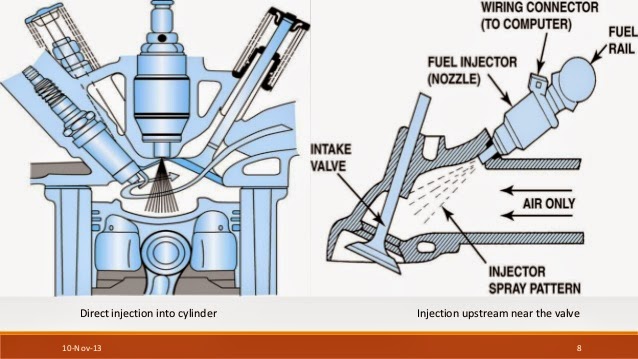WORKING
PRINCIPLE OF WANKEL ENGINE
Wankel developed the Wankel-type rotary engine in 1957
The rotary engine is composed of a
cocoon-shaped housing and a triangular-shaped rotor inside of it. The space
between the rotor and the housing wall provides the chamber for internal
combustion and the pressure of expanding gases serves to turn the rotor. In
order to make the rotary engine work as an internal combustion engine, the four
processes of intake, compression, combustion and exhaust had to be performed in
succession in the working chamber. Suppose that the triangularshaped rotor were
concentrically placed inside a true circular housing. In this case, the working
chamber would not vary in volume as the rotor turned inside the housing. Even
if the fuel-air mixture were ignited there, the expansion pressure of
combustion gas would merely work toward the center of the rotor and would not
result in rotation. That was why the inner periphery of the housing was
contoured as a trochoid-shape and assembled with the rotor installed on an
eccentric shaft. The working chamber changes in volume twice per revolution,
thus the four processes of the internal combustion engine could be achieved.
With the Wankel-type rotary engine, the rotor’s apices follow the oval contour
of the inner periphery of the engine casing while remaining in contact with the
gear on the output shaft which is also in eccentric orbit around the center
point of the engine casing. A phase gear mechanism dictates the orbit of the
triangular rotor. The phase gear consists of an inner-toothed gear ring fixed
on the inside of the rotor and an outer-toothed gear fixed on an eccentric
shaft. If the rotor gear were to have 30 teeth inside it, the shaft gear would
have 20 teeth on its perimeter so the gear ratio is 3:2. Due to this gear
ratio, the rate of turning speed between the rotor and the shaft is defined as
1:3. The rotor has a longer rotation period than the eccentric shaft. The rotor
rotates one turn while the eccentric shaft rotates three turns. With the engine
running at 3000rpm, the rotor will run at a mere 1000rpm.
Advantages
·
A far higher power to weight ratio than a piston engine
·
It is approximately one third of the weight of a piston engine of
equivalent power output
·
It is approximately one third of the size of a piston engine of
equivalent power output.




.jpg)
